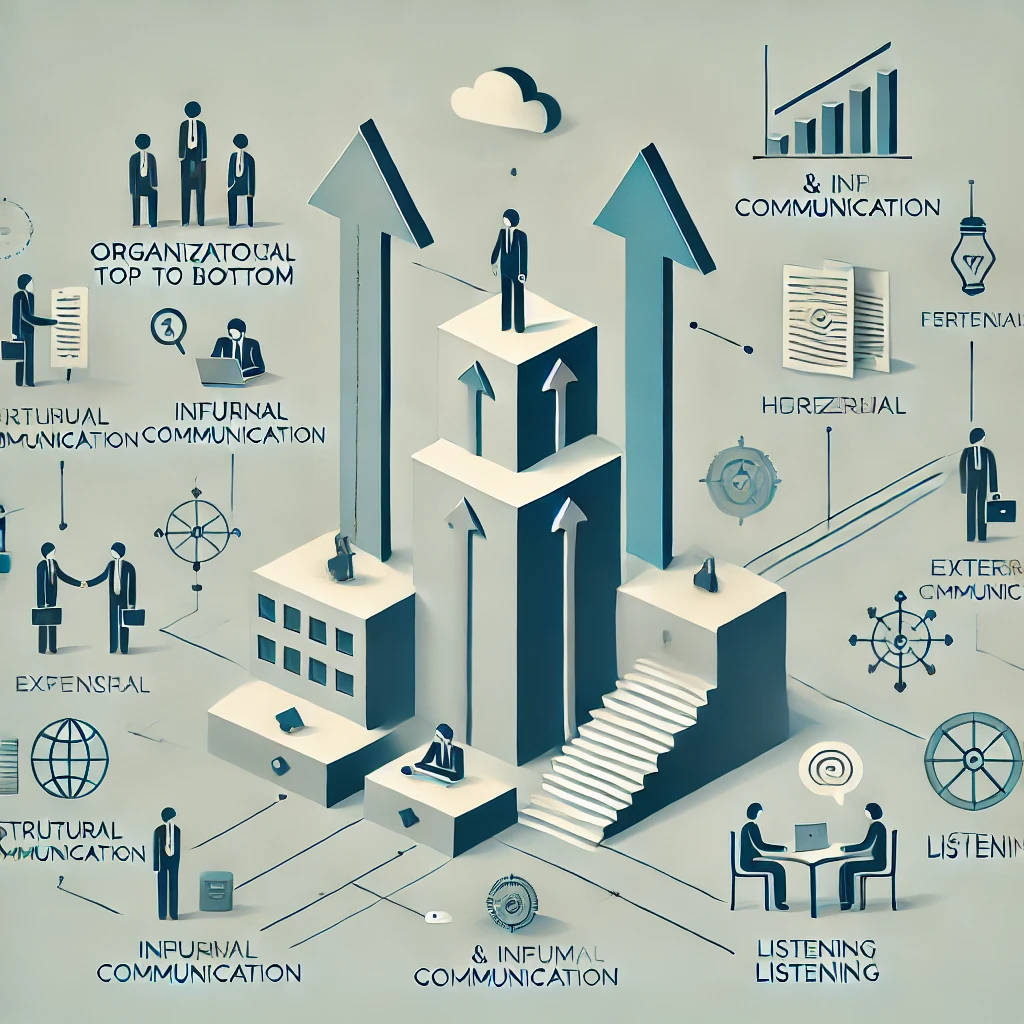Communication is not limited to just verbal, non-verbal, and visual methods. In different environments — especially in organizations — communication can be classified in various other ways. In this post, we’ll explore other major types of communication, such as downward, upward, horizontal, external, internal, formal, informal, oral, written, spoken, and listening.
—
1. Downward Communication
Definition:
When information flows from higher levels of authority to lower levels in an organization.
Example: A manager assigning tasks to employees.
—
2. Upward Communication
Definition:
When subordinates share feedback, reports, or suggestions to higher-ups.
Example: An employee submitting a report to their supervisor.
—
3. Horizontal Communication
Definition:
Communication between individuals at the same level within an organization.
Example: Two team members discussing a project.
—
4. External Communication
Definition:
Communication with people or entities outside the organization.
Example: Emails to clients, press releases, advertisements.
—
5. Internal Communication
Definition:
Communication within the organization among employees or departments.
Example: Staff meetings, internal memos.
—
6. Formal Communication
Definition:
Structured communication that follows official channels.
Example: Office circulars, official letters.
—
7. Informal Communication
Definition:
Unstructured and casual communication within or outside the workplace.
Example: Casual chats, workplace gossip, or group messages.
—
8. Oral Communication
Definition:
Spoken communication in face-to-face or remote settings.
Example: Phone calls, team discussions, interviews.
—
9. Written Communication
Definition:
Any message conveyed through written symbols.
Example: Emails, reports, documentation.
—
10. Spoken Communication
Definition:
Direct verbal interaction using speech.
Example: Conversations, speeches, verbal instructions.
—
11. Listening
Definition:
The active process of receiving and understanding spoken messages.
Example: Paying attention in a meeting or during a conversation.
—
Conclusion
Understanding these types of communication helps individuals and organizations choose the right method for the right situation. Whether you’re leading a team or engaging with customers, mastering each form ensures better clarity and efficiency.
—
Call to Action:
For more posts on communication, productivity, and professional growth, follow our blog and stay updated!




